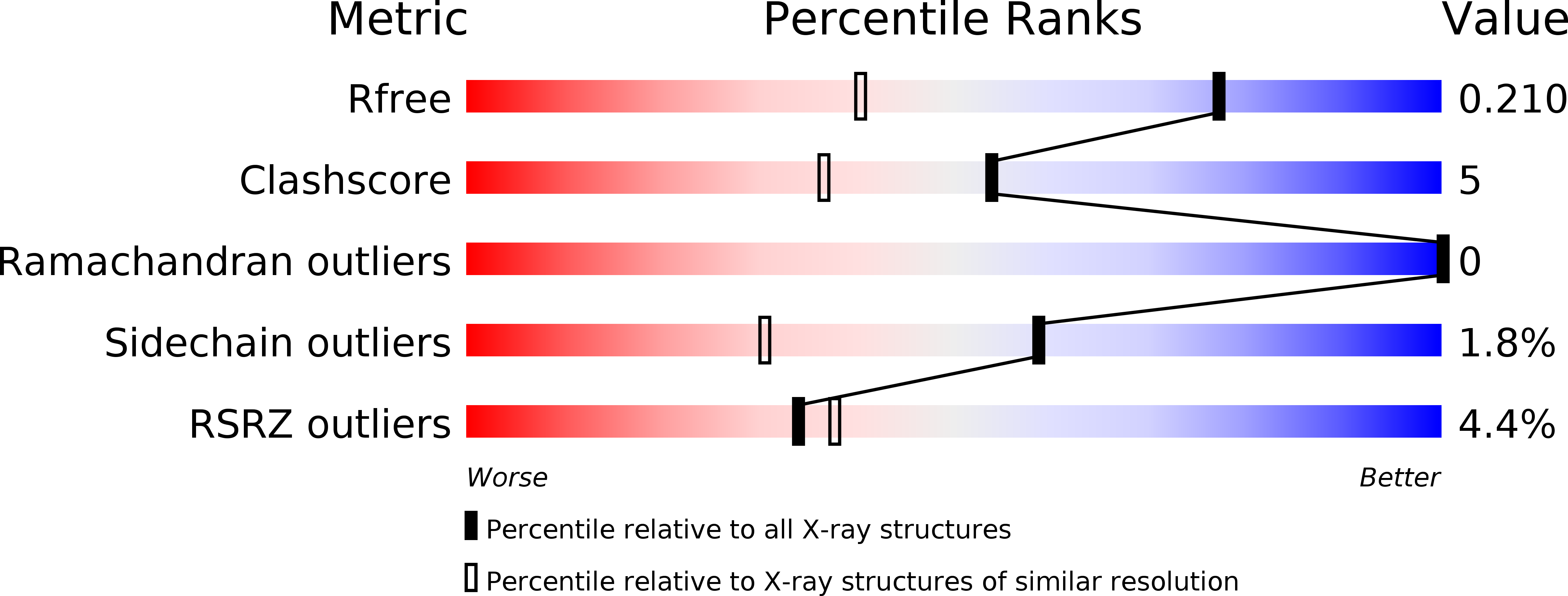Crystal structures of the F88Y obelin mutant before and after bioluminescence provide molecular insight into spectral tuning among hydromedusan photoproteins
Natashin, P.V., Markova, S.V., Lee, J., Vysotski, E.S., Liu, Z.J.(2014) FEBS J 281: 1432-1445
- PubMed: 24418253
- DOI: https://doi.org/10.1111/febs.12715
- Primary Citation of Related Structures:
4N1F, 4N1G - PubMed Abstract:
Ca(2+) -regulated photoproteins are responsible for the bioluminescence of a variety of marine coelenterates. All hydromedusan photoproteins are a single-chain polypeptide to which 2-hydroperoxycoelenterazine is tightly but non-covalently bound. Bioluminescence results from oxidative decarboxylation of 2-hydroperoxycoelenterazine, generating protein-bound coelenteramide in an excited state. The bioluminescence spectral maxima of recombinant photoproteins vary in the range 462-495 nm, despite a high degree of identity of amino acid sequences and spatial structures of these photoproteins. Based on studies of obelin and aequorin mutants with substitution of Phe to Tyr and Tyr to Phe, respectively [Stepanyuk GA et al. (2005) FEBS Lett 579, 1008-1014], it was suggested that the spectral differences may be accounted for by an additional hydrogen bond between the hydroxyl group of a Tyr residue and an oxygen atom of the 6-(p-hydroxyphenyl) substituent of coelenterazine. Here, we report the crystal structures of two conformation states of the F88Y obelin mutant that has bioluminescence and product fluorescence spectra resembling those of aequorin. Comparison of spatial structures of the F88Y obelin conformation states with those of wild-type obelin clearly shows that substitution of Phe to Tyr does not affect the overall structures of either F88Y obelin or its product following Ca(2+) discharge, compared to the conformation states of wild-type obelin. The hydrogen bond network in F88Y obelin being due to the Tyr substitution clearly supports the suggestion that different hydrogen bond patterns near the oxygen of the 6-(p-hydroxyphenyl) substituent are the basis for spectral modifications between hydromedusan photoproteins.
Organizational Affiliation:
National Laboratory of Biomacromolecules, Institute of Biophysics, Chinese Academy of Sciences, Beijing, China.
















